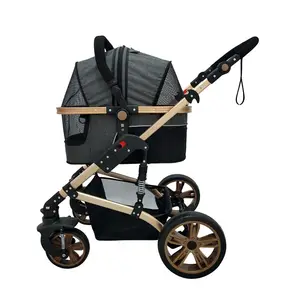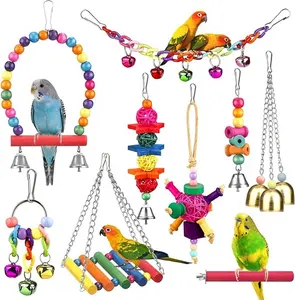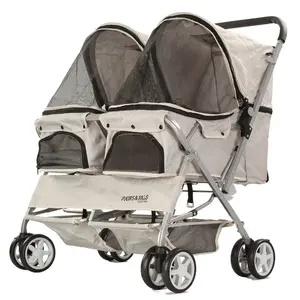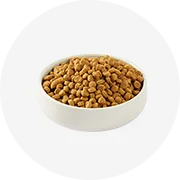Phổ biến trong ngành của bạn






Chất Lượng Cao Trẻ Em Màu Cát Cho Màu Sơn Nghệ Thuật Màu Cát Thiêu Kết Vườn Sơn Cát
1,50 US$ - 4,70 US$
Đơn hàng tối thiểu: 2 Kilogram
Vận chuyển mỗi chiếc: 16,19 US$







Cấp thực phẩm nguyên liệu tự nhiên vermiculite sử dụng cho vật liệu xây dựng
0,90 US$ - 1,20 US$
Đơn hàng tối thiểu: 100 Túi
Vận chuyển mỗi chiếc: 8,95 US$







Nhà Máy Bán Hàng Trực Tiếp Cơ Thể Là Đồng Phục Màu Và Hội Đồng Quản Trị Sơn Cát Nhuộm Màu Cát Nghệ Thuật Màu Cát
80,00 US$ - 130,00 US$
Đơn hàng tối thiểu: 5 Tấn hệ mét







Nhà máy chuyên nghiệp bán hàng trực tiếp bóng hình dạng gốm đúc cát như màu xanh lá cây đúc vật liệu
0,35 US$ - 0,38 US$
Đơn hàng tối thiểu: 1000 Kilogram







Thực tế Hot Bán màu cát cho chất lượng cao trẻ em màu sơn tự nhiên chơi cát
80,00 US$ - 130,00 US$
Đơn hàng tối thiểu: 5 Tấn hệ mét







Mùa Hè Chất Lượng Hàng Đầu Đồ Chơi Bãi Biển Cát Và Nước Chơi Đồ Chơi Bằng Nhựa Sandbox Trẻ Em Đầy Màu Sắc Bảng Cát
10,89 US$ - 23,00 US$
Đơn hàng tối thiểu: 40 Cái






Hot Bán Trẻ Em Ngoài Trời Cát Pit Trẻ Em Sân Chơi Bằng Gỗ Sandbox Cho Mầm Non Mẫu Giáo Ngoài Trời Cát Khu Vực Chơi
68,00 US$ - 74,00 US$
Đơn hàng tối thiểu: 300 Bộ






Mùa Hè Nước Bảng Chàng Trai Cô Gái Bãi Biển Sân Sau Công Viên Hoạt Động Trẻ Mới Biết Đi 3 Tầng Nước Sandbox Và Trẻ Em Nước Bảng
9,91 US$ - 12,38 US$
Đơn hàng tối thiểu: 200 Cái
Vận chuyển mỗi chiếc: 39,85 US$






Samtoy Ngoài Trời cảm giác đồ chơi bãi biển Trò chơi cát và bàn nước mùa hè bãi biển thuyền trẻ em sandbox trẻ em hoạt động bảng
4,59 US$ - 4,99 US$
Đơn hàng tối thiểu: 120 Gói
Vận chuyển mỗi chiếc: 4,97 US$






Đồ Chơi Bãi Biển Mùa Hè Cho Trẻ Em Bàn Cát Hoạt Động Ngoài Trời Bàn Chơi Cảm Giác Bàn Cát Và Nước
9,78 US$ - 11,18 US$
Đơn hàng tối thiểu: 60 Cái





Jinying Đồ Chơi Bãi Biển Trẻ Em Mùa Hè Bàn Cát Hoạt Động Ngoài Trời Bàn Chơi Cảm Giác Cát Và Nước
8,24 US$ - 9,42 US$
Đơn hàng tối thiểu: 60 Cái





Đồ Chơi Mùa Hè Bàn Chơi Nước Hộp Cát Học Tập Với Phụ Kiện Và Dụng Cụ Đồ Chơi Trong Nhà Ngoài Trời Bàn Cát Nước Đồ Chơi Mùa Hè
7,45 US$ - 8,70 US$
Đơn hàng tối thiểu: 60 Cái
Các tìm kiếm liên quan:
cát nhân tạo cho trẻ emdự án cát nhân tạochơi cát cho sandboxcát chơi lấp lánhcát chơi đầy màu sắc nhân tạo cho trẻ emcát chơi tốt nhất cho trẻ emsakrete chơi cátcát chơi hoàng gia tự làmtrẻ em chất lượng cao chơi cátcát chơi an toàn cho trẻ emcát chơi miễn phí silicacát chơi màu hồngcát chơi màu xanhcát chơi tự làmbaha chơi cát






Túi của tất cả-tự nhiên lung linh chơi cát cho squishing, trộn và đúc, cảm giác đồ chơi cho trẻ em
1,00 US$ - 1,15 US$
Đơn hàng tối thiểu: 200 Bộ
Vận chuyển mỗi chiếc: 1,80 US$






Juguetes Montessori ngoài trời mềm cát xô sinh thái thân thiện Silicone bãi biển cát đồ chơi thiết lập cho trẻ em bãi biển cát đồ chơi sandbox đồ chơi
3,67 US$ - 4,70 US$
Đơn hàng tối thiểu: 100 Cái
Vận chuyển mỗi chiếc: 34,43 US$






Chơi Xây Dựng Cát Kit Mô Hình Công Cụ Có Thể Gập Lại Sandbox Với Sạch Bộ Quà Tặng Cho Bé Trai Cô Gái
6,00 US$ - 6,25 US$
Đơn hàng tối thiểu: 360 Cái
Vận chuyển mỗi chiếc: 2,24 US$






Mùa Hè Mới Đồ Chơi Kỳ Nghỉ Hè Cát Công Cụ Cát Và Nước Bảng Sandbox Bãi Biển & Cát Đồ Chơi Chơi Thiết Lập
4,93 US$ - 5,17 US$
Đơn hàng tối thiểu: 60 Cái






Xách Tay Trẻ Mới Biết Đi Ngoài Trời Sandbox Chơi Set Cho Du Lịch Silicone Bãi Biển Đồ Chơi Cho Trẻ Em Bé Cát Đồ Chơi Với Đóng Mở Xô Bộ
5,96 US$ - 7,35 US$
Đơn hàng tối thiểu: 500 Bộ






Giảm Giá Mạnh 2023 Bộ Đồ Chơi Cát Bãi Biển 21P Cho Trẻ Em Khuôn Cát Bãi Biển Bộ Dụng Cụ Xô Xẻng Đồ Chơi Hộp Cát Cho Bé Trai Bé Gái
1,99 US$ - 2,79 US$
Đơn hàng tối thiểu: 100 Cái






Mùa hè ngoài trời đồ chơi trẻ em bãi biển sandbox bảng hoạt động cảm giác chơi bảng cát và nước bảng
8,30 US$ - 9,40 US$
Đơn hàng tối thiểu: 30 Cái
Vận chuyển mỗi chiếc: 15,89 US$






Đồ Chơi Ngoài Trời Mùa Hè Bàn Cát Bãi Biển Cho Trẻ Em Hoạt Động Bàn Chơi Cảm Giác Bàn Cát Và Nước
8,50 US$ - 9,89 US$
Đơn hàng tối thiểu: 60 Cái






Bộ Đồ Chơi Cát Bãi Biển Cho Trẻ Em Khuôn Cát Hình Lâu Đài Động Vật Bánh Xe Nước Và Xô Đồ Chơi Hộp Cát Với Túi Lưới Đồ Chơi Bãi Biển
2,39 US$ - 3,09 US$
Đơn hàng tối thiểu: 180 Hộp





Đồ Chơi Hộp Cát Cho Trẻ Tập Đi Chơi Nước Tắm Bán Chạy Bộ Bãi Biển Bảo Vệ Môi Trường Cho Trẻ Em Bằng Silicon
Sẵn sàng vận chuyển
4,08 US$ - 4,90 US$
Đơn hàng tối thiểu: 50 Cái
Vận chuyển mỗi chiếc: 1,17 US$






Hộp Cát Màu Tự Nhiên 2 Trẻ Em 1 Hộp Cát Lớn Bằng Gỗ Cho Trẻ Em Hộp Cát Bán Buôn
7,30 US$ - 11,00 US$
Đơn hàng tối thiểu: 500 Bộ






Trẻ Em Cát Và Nước Bé Hoạt Động Bảng Sandbox Đồ Chơi Cảm Giác Bảng Đồ Chơi Mùa Hè Bãi Biển Chơi Bảng Câu Cá Set
4,00 US$ - 4,22 US$
Đơn hàng tối thiểu: 12 Cái






Trẻ Em Ngoài Trời Cát Hộp Với Bao Gồm Có Thể Gập Lại Băng Ghế Dự Bị Ghế Chơi Bằng Gỗ Thiết Lập Nâng Cấp Có Thể Thu Vào Mái Hộp Cát
13,00 US$ - 20,80 US$
Đơn hàng tối thiểu: 100 Bộ
Vận chuyển mỗi chiếc: 440,46 US$






Bàn Chơi Nước Cát Ngoài Trời Đồ Chơi Sandbox Trò Chơi Bãi Biển Mùa Hè Bộ Đồ Chơi Chơi Nước Cát Bãi Biển Hai Chậu
8,94 US$ - 9,62 US$
Đơn hàng tối thiểu: 12 Cái
Vận chuyển mỗi chiếc: 15,98 US$






Bán Buôn Trẻ Em Giáo Dục Sớm Sơn Đào Tạo Scraping Sandbox Học Tập Chữ Viết Tay Cát Bảng Montessori Dạy Học Hỗ Trợ
1,99 US$ - 2,42 US$
Đơn hàng tối thiểu: 2 Bộ






Bàn Cát & Nước Bộ Hộp Cát Sân Vườn Ngoài Trời Bàn Chơi Đồ Chơi Bãi Biển Mùa Hè Cho Trẻ Em Trò Chơi Bãi Biển Cát Chơi Nước Đồ Chơi Tương Tác
4,59 US$ - 7,28 US$
Đơn hàng tối thiểu: 200 Cái






Giáo Dục Montessori giảng dạy bằng gỗ cảm giác khay thực hành cát cạo Hộp học tập viết thư pháp sandbox đồ chơi cho trẻ em
Sẵn sàng vận chuyển
3,95 US$ - 6,75 US$
Đơn hàng tối thiểu: 10 Bộ
Vận chuyển mỗi chiếc: 6,50 US$






Đồ Chơi Bãi Biển Bằng Silicon Cho Trẻ Em 3-10 Tuổi, Xô Cát, Xẻng, Khuôn Chủ Đề Biển 3D Bộ Đồ Chơi Hộp Cát Cho Trẻ Mới Biết Đi
8,00 US$
Đơn hàng tối thiểu: 100 Bộ






1 Bộ Silicone bãi biển Đồ chơi hình dạng tinh tế động vật xô sandbox bãi biển cát đồ chơi thiết lập cho bên nước
3,05 US$ - 7,85 US$
Đơn hàng tối thiểu: 20 Bộ
Vận chuyển mỗi chiếc: 10,17 US$






Summer Beach Sand Sandbox Đồ Chơi Thiết Lập Với Tưới Nước Xô Và Spade Xẻng Khuôn Thùng Vui Chơi Đồ Chơi Ngoài Trời Cho Trẻ Em Smooth Edge
0,80 US$ - 1,30 US$
Đơn hàng tối thiểu: 500 Cái






Trẻ em mới tàu cướp biển nhựa đồ chơi bãi biển sandbox bảng với tưới nước nồi tương tác trò chơi bãi biển cát bảng mùa hè bãi biển đồ chơi
Sẵn sàng vận chuyển
6,60 US$ - 11,60 US$
Đơn hàng tối thiểu: 12 Cái
Vận chuyển mỗi chiếc: 13,81 US$




Hot Bán Buôn Sò Cát Và Nước Hồ Bơi Sandbox Chơi Trẻ Em Ngoài Trời Mùa Hè Bãi Biển Đồ Chơi Bãi Biển Chất Lượng Cao Nhựa Đồ Chơi Cho Trẻ Em
7,77 US$ - 7,92 US$
Đơn hàng tối thiểu: 24 Container Hai mươi-Foot






Mềm Silicone Bãi Biển Đồ Chơi Cho Trẻ Em SandBox Set Kit Xô, Trẻ Em Mùa Hè Đồ Chơi Bãi Biển Mềm Silicone SandBox Set
Sẵn sàng vận chuyển
5,65 US$ - 6,98 US$
Đơn hàng tối thiểu: 60 Bộ
Vận chuyển mỗi chiếc: 12,19 US$



Khay Hoạt Động Bơm Hơi Bộ Đồ Lộn Xộn Cát Bóp Bộ Đồ Chơi Hộp Cát Với Khuôn Lâu Đài Và Dụng Cụ
1,50 US$ - 1,80 US$
Đơn hàng tối thiểu: 1000 Bộ






Silicone Xô Bãi Biển Đồ Chơi Phổ Biến Mùa Hè Ngoài Trời Tưới Nước Có Thể Sandbox Tắm Chơi Cát Lâu Đài Khuôn
7,55 US$ - 8,28 US$
Đơn hàng tối thiểu: 30 Bộ
Vận chuyển mỗi chiếc: 4,04 US$






Unisex trẻ em chơi ngoài trời bằng gỗ cát và Nước Dã Ngoại bảng sandbox cho những buổi dã ngoại vui vẻ và cuộc phiêu lưu
26,12 US$ - 28,28 US$
Đơn hàng tối thiểu: 50 Cái
Vận chuyển mỗi chiếc: 19,40 US$






2024 Đồ Chơi Trẻ Em Trong Nhà Và Ngoài Trời Trò Chơi Đầy Màu Sắc PVC Không Gian Bơm Hơi Đồ Chơi Khay Cát Đệm Không Khí Chơi Cát Khay
0,55 US$ - 1,59 US$
Đơn hàng tối thiểu: 10 Cái
Các danh mục hàng đầu
Giới thiệu về cát chơi màu cho sandbox
Alibaba.com cung cấp các sản phẩm 220 cát chơi màu cho sandbox. Có rất nhiều cát chơi màu cho sandbox lựa chọn dành cho bạn, chẳng hạn như 5 để 7 năm, 8 để 13 năm, và 0 để 24 tháng. Bạn cũng có thể chọn từ unisex, chàng trai, và nữ cát chơi màu cho sandbox. Cũng như từ nhựa, pvc, và gỗ cát chơi màu cho sandbox.Và bất kể cát chơi màu cho sandbox là đầy màu sắc, màu xanh, hay màu đỏ.














